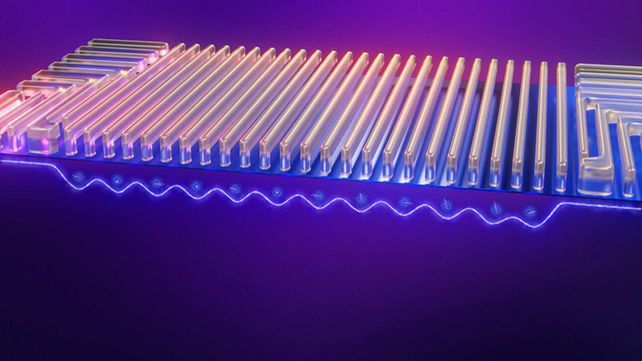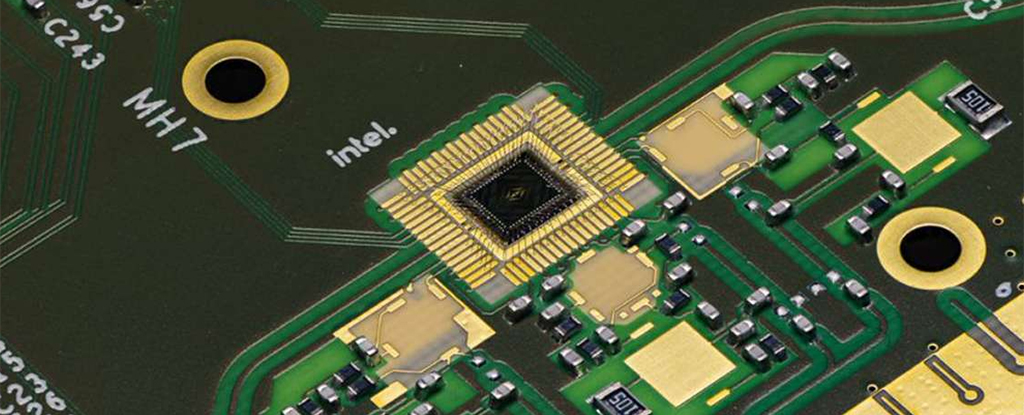Products You May Like
A new quantum processor built on silicon will soon be made available to a select few universities and other institutions across the US, potentially giving more researchers an opportunity to tinker with quantum computing hardware first hand.
Crafted by the computer chip manufacturer Intel, it’s hoped that the new processor – offering twice as many qubits as a similar component announced last year – will drive research into quantum computing and bring the technology closer to becoming a practical reality.
While quantum computing technology has advanced in leaps and bounds devices are still more like prototypes or proofs of concept than practical machines, prone to stability issues and errors and requiring super-specific lab conditions.
Dubbed Tunnel Falls, Intel’s new 12-qubit quantum processing unit (or QPU) was developed to recruit scientists far and wide in a quest to realize the full potential of quantum computing.
“Tunnel Falls is Intel’s most advanced silicon spin qubit chip to date and draws upon the company’s decades of transistor design and manufacturing expertise,” says Jim Clarke, the director of Quantum Hardware at Intel.
“The release of the new chip is the next step in Intel’s long-term strategy to build a full-stack commercial quantum computing system.”
Just as the bit is the unit of calculation in a classical computer, the qubit is fundamental to the quantum versions.
Bits represent one of two states, which build into sequences that can store information and perform simple logical tasks. Qubits represent complex mixes of states. Combined or ‘entangled’ with other qubits, these systems can be used to carry out unique operations that would take a string of traditional bits an impractical amount of time to run.

Companies including Google and IBM are taking different approaches to Intel, creating powerful versions of the technology that are accessed remotely using software rather than distributing the hardware itself.
By betting on QPUs that run on silicon, like the conventional processors in our computers today, Intel wants to make the transition to quantum computing easier. According to Nature Electronics, “Silicon may be the platform with the greatest potential to deliver scaled-up quantum computing.”
Just as there are different ways to store binary information, there are different approaches to isolating, entangling, and reading qubits. In Intel’s chips, including Tunnel Falls, tiny structures called quantum dots trap single electrons, which can then be used to store and read quantum information by virtue of a property known as their spin.
These chips can be produced with just a few tweaks to Intel’s normal production lines, the company says.
That in turn makes them more straightforward to produce than other types of qubits we’ve seen – although we’re still talking about incredibly delicate and sophisticated technology. With more qubits produced, Intel can share them with other researchers.
“This level of sophistication allows us to innovate novel quantum operations and algorithms in the multi-qubit regime and accelerate our learning rate in silicon-based quantum systems,” says Dwight Luhman, a technical staff member at the US Department of Energy’s Sandia National Laboratories.
Teams including those at the Sandia National Laboratories should be able to work on improving the performance of these QPUs and reducing error rates, which is a perennial problem when it comes to developing quantum computers.
Not everyone agrees silicon is the way forward for quantum computing, but previous research has shown that putting quantum computers on components used in conventional classical computing could be a feasible approach.
Diverse approaches may be just what we need to crack the problems in quantum computing, eventually leading to systems that can tackle massive computing challenges that are far beyond what today’s machines are able to take on.
“While there are still fundamental questions and challenges that must be solved along the path to a fault-tolerant quantum computer, the academic community can now explore this technology and accelerate research development,” says Clarke.
